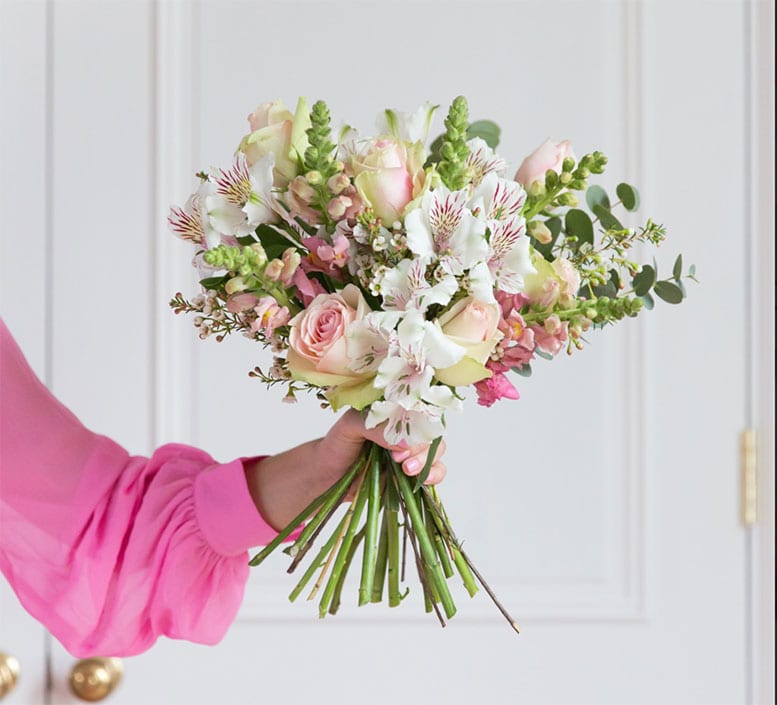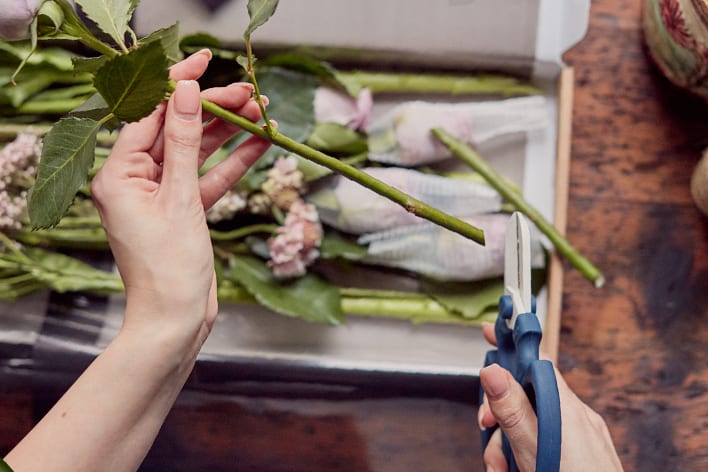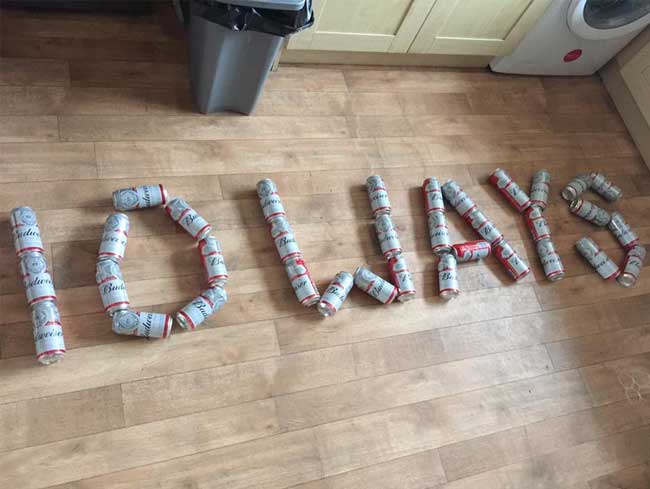Regardless of whether you’re spending £5 on flowers at Aldi/Lidl or £35 on a bunch from an online florist (+ £10 off with this) these steps should be taken to improve the look and longevity of your cut flowers:
- Unpackage the flowers (if wrapped in plastic use this to collect the leaves/off cuts etc)
- Lay them out
- Find a suitable vase/container, ensure it’s clean (remember bacteria will harm your plants) and fill with clean water

- Add flower food – You can buy it in bulk if you buy flowers often (or make your own using a teaspoon of Bleach / or five tablespoons of White Vinegar1)
- Remove excess leaves, especially those that would be in the water
- Remove any guard petals (e.g. on a rose) – see video below
- Start creating a green base with greenery
- Trim 2-3cm off the bottom of all stems with a diagonal cut (these scissors are a 10ways favourite) &/or line up the flowers with the outside of the vase to work out where to cut
- Play with the height/positioning of the more prominent flowers – You may with to trim some of the stems to different heights and position
- Discard the cut pieces into your food waste and recycle the plastic if possible

- After 3-5 days consider changing the water and recutting the stems to give them another boost.
- After 5-10 days some of the flowers will be time for the food waste/compost heap/bin, however, others will still be looking beautiful. Remove these good flowers, recut and add to smaller vases (e.g. jam jars or drinking glasses) for a few extra days of life.
Where can I find the best prices on flowers?
- Your local florist (or go via someone like Interflora)
- The supermarkets like Aldi / Lidl etc
- HomeBargains Flowers – We’ve never tested the quality but possibly a good budge option
- Bunches – A good allrounder
- Marks & Spencer – A good allrounder
- Bloom & Wild (+ £10 off with this) – Something special
- Selfridges – Money isn’t an issue (e.g. £600 for a bunch 😳)
Images courtesy of Bloom & Wild




























